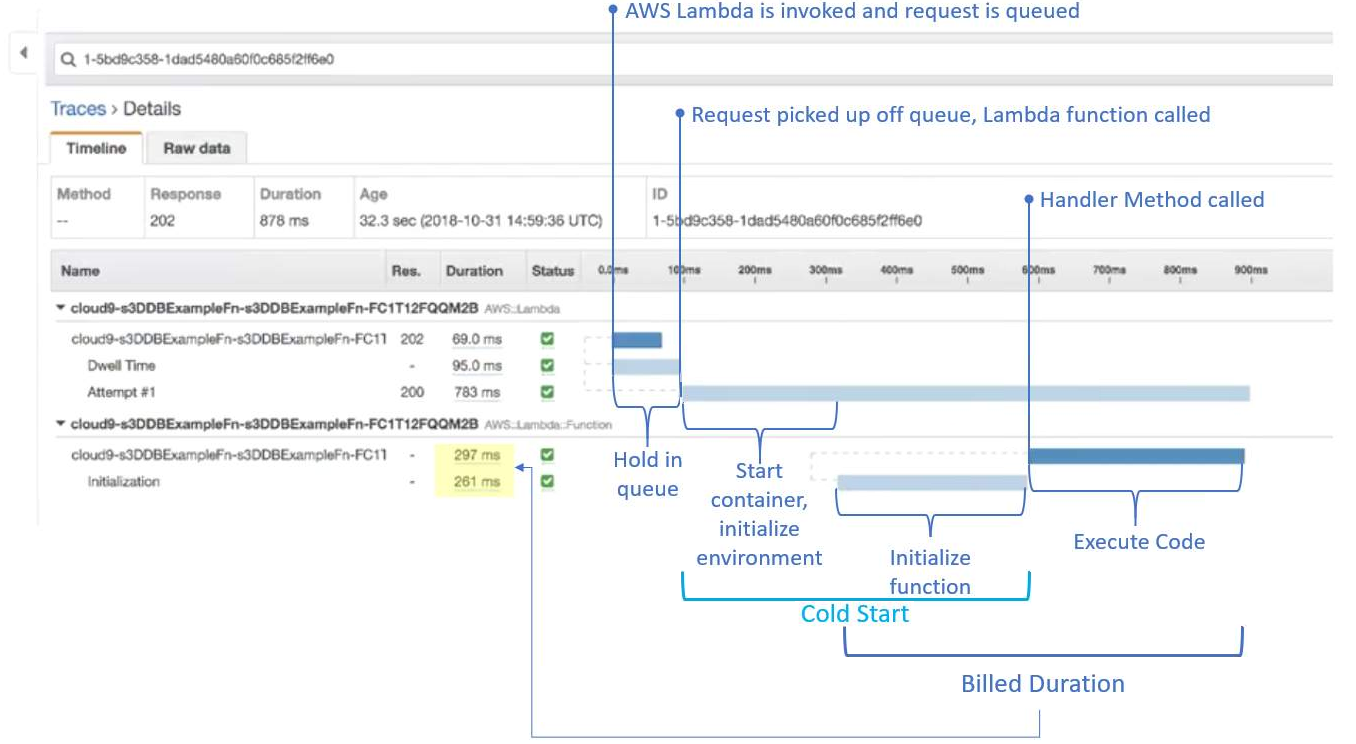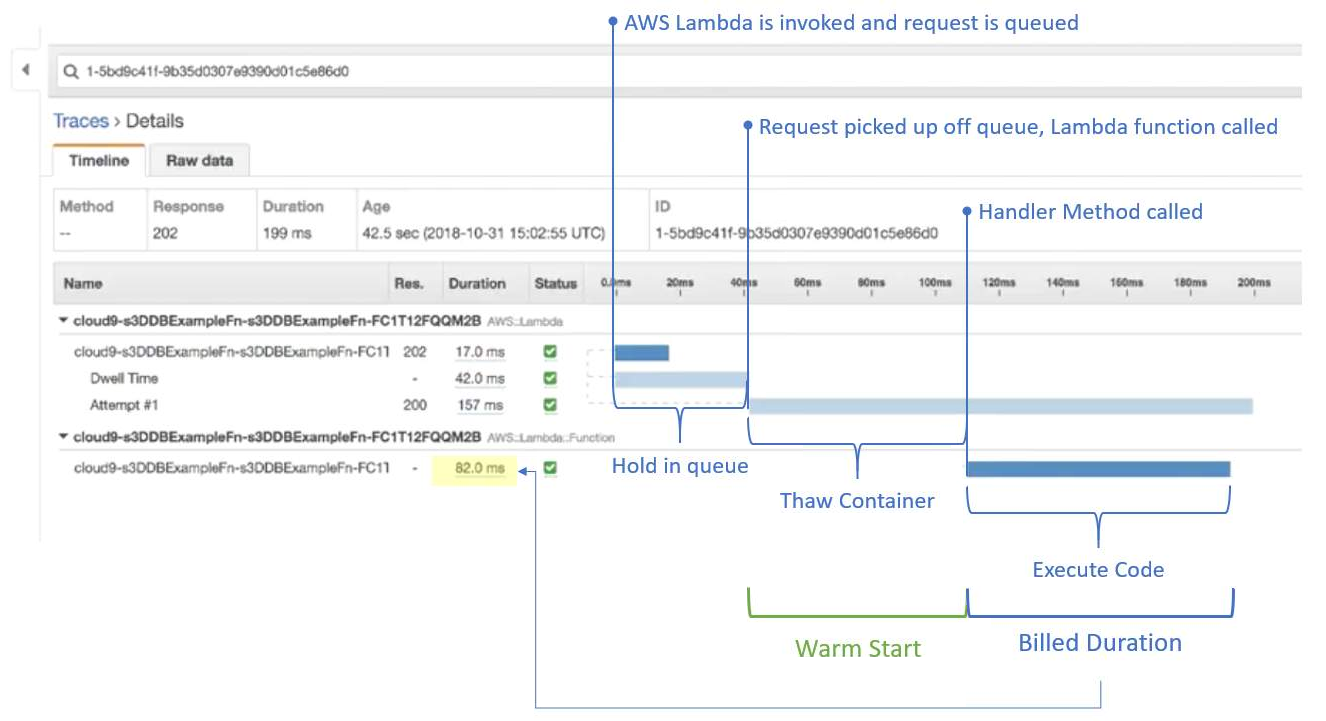[This page contains the Q&A from the AWS webinar on “Testing and Deployment Best Practices for AWS Lambda-Based applications.
The details below are useful, but always use this information in combination with your own research.
Answers to the questions were provided by Eric Johnson of AWS during the webinar.
]
AWS SAM: AWS Serverless Application Model
The AWS Serverless Application Model (AWS SAM) is a model to define serverless applications. AWS SAM is natively supported by AWS CloudFormation and defines simplified syntax for expressing serverless resources. The specification currently covers APIs, Lambda functions and Amazon DynamoDB tables.
https://docs.aws.amazon.com/lambda/latest/dg/serverless_app.html
Q: What is your recommendation on creating and maintaining connection pools to RDS / POSTGRES databases that are needed in a Lamba Function?
A: If you are using Aurora Serverless look at the Data API. https://docs.aws.amazon.com/AmazonRDS/latest/AuroraUserGuide/data-api.html
Q: Can you use Cloud9 to debug SAM local?
A: Yes, however, C9 also offers a UI for debugging, that is based on SAM local - either work.
Q: I don't really understand the context object of a lambda function. What is it used for?
A: This object provides methods and properties that provide information about the invocation, function, and execution environment.
https://docs.aws.amazon.com/lambda/latest/dg/nodejs-prog-model-context.html
Q: How does debugging work with SAM?
A: You can set breakpoints and have a call stack available. It connects to the debug port provided by SAM Local. https://docs.aws.amazon.com/serverless-application-model/latest/developerguide/serverless-sam-cli-using-debugging.html
Q: Is there any way to autogenerate sam template? or need to write it yourself?
A: Using "SAM init" on the SAM cli will create a base template for a project.
Q: How to do canary, an blue/green with serverless?
A: https://aws.amazon.com/blogs/compute/implementing-canary-deployments-of-aws-lambda-functions-with-alias-traffic-shifting/ You can do traffic shifting between your serverless functions. Just what Chris is explaining right now.
Q: If a lambda function is contained on a VPC, being that VPC different per stage… how can we define the VPC to be used for a certain Environment? (if using tags to deploy)
A: You can specify VPC through template parameters.
Q: How to daisy-chain lambdas together?
A: Step-functions allows you to write loosely coupled lambda functions together instead of creating dependency between them. More elegant and less glue code required;
Q: If running a serverless .net core app on a lambda function which exposes numerous endpoints does a cold start relate to the lambda function as a whole or per endpoint?
A: Cold start is specific to a Lambda function and not individual endpoints supported by the same Lambda function. For example: if one endpoint starts the Lambda execution environment, another call to an endpoint on the same lambda function will be warm and ready to go.
Q: Is there anyway to use OpenAPI to generate SAM template?
A: API Gateway resources can use OpenAPI documents to define the endpoints. You can also export your API Gateway to an OpenAPI doc from within the console.
Q: What is the best way to trigger N number of lambda functions at once? Should SQS be used?
A: Lambda functions can be triggered from SQS but it is not guaranteed they will be triggered at the same time. You can also broadcast to multiple Lambda functions via SNS.
Q: Is serverless a good idea to sue for a project where my users start using the app everyday between 8;30 to 9 A.m and shuts down at 5:30 pm?
A: As far as timing, Serverless would work well for this because you will only be charged for the invocations. There will be no resources sitting idle.
Q: is sam also a sub component of the aws cli or will it be?
A: SAM is not a sub-component of the AWS CLI, but DOES depend upon it. For example, SAM package is a wrapper for aws lambda package.
Q: will there be delay to execute the Lamda when user first start using in the morning? considering the cold start ?
A: The first time a Lambda function is invoked there will be a slight cold start delay. The length of this delay is dependant on multiple factors like memory, function size, language, and if it is in a VPC. Outside of a VPC the cold start is often in the milliseconds
Q: Do lambda layers work locally in node js? I've updated aws-cli, sam local, and pip, but this doesn't seem to work locally
A: Yes it does work. You do need the latest version of AWS CI and SAM. Updating AWS CLI requires the latest Python as well for the latest features. If you are on a MAC I have found that using Brew is the best way to install.
Q: Is the AWS SAM CLI suitable for use in automation?
A: Depends on the automation, but I would generally say it is best for development. Automation should be achieved through tools like CodePipeline, CodeBuild, CodeDeploy, etc
Q: Are there some example projects using AWS SAM?
A: The Serverless Application Repository has many examples to look at. https://aws.amazon.com/serverless/serverlessrepo/
Q: Where do the various environment configs live, in their own template files?
A: Configs can live several places. Parameter Store, Build Variables, Template Variables. If using a different account for environments I encourage the use of the parameter store
Q: It seems like when I use layers in sam templates. I need to push from a sam template first to create a new version of the layer. Then manually change the version number in the template to reference the new layer version. Is there a way to reference code that you are zipping up and sending to s3 to become a layer version in the lambda template. Then referencing that same template for zipping into s3 for your layer link?
A: For iterating purposes, if the layer is on the same template you can reference the logical name of the layer. It will grab the latest each time



